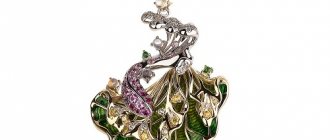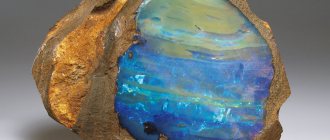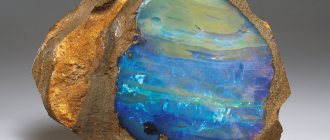In the dictionary D.N. Ushakova
CHERVONNY, chervonnaya, chervonnoe (obsolete, region). 1. Red, scarlet. 2. adj., by · meaning. associated with pure gold, which has a reddish tint. Red gold. II. CHERVONNY , red, red. adj. to hearts" title='what are hearts, the meaning of the word hearts in Ushakov's dictionary'>hearts, belonging to the suit of hearts. Jack of Hearts. “Oh, mamma, you are more of a queen of hearts.” Gogol. • Jack of Hearts (· colloquial · obsolete) - trans. a young man from the bourgeois-noble circle, leading an idle life. “The Jack of Hearts... a creature languishing under the burden of idleness and drunken melancholy, living from day to day, devoid of any stability to fight life and not recognizing any life tasks other than the satisfaction of the moment.” Saltykov-Shchedrin.
Shades
Pink means romance, kindness, love, passion. The paler it is, the stronger the expression of love. Causes a feeling of comfort, calms, relieves obsessive thoughts, helps in a crisis.
Scarlet strongly stimulates sensuality, has a stronger effect than red. The problems caused by this color are the tendency to make irrevocable decisions and fanaticism (people strive to conquer only the highest peaks).
Raspberry - it has a slight bluish tint; this color does not fight life, but loves it, does not believe in the effectiveness of the struggle, but goes and takes what it wants. As a rule, it deals with the individual, but not with the masses. Such people are extremely sincere and believe in the power of words.
Fiery - it has a yellow-orange tint; characterized by extreme zeal, rushes forward regardless of the goal. Characterized by willpower and ardor.
Red-brown is distinguished With an increased preference for this color, overwork and exhaustion are noted.
Dark burgundy ( almost brown) inherited willpower from red, and a tendency to deep thought from brown.
Dark red . Those who prefer this color very often ask the question “why is this necessary?” These people are overly lenient. At the same time, their condescension can develop into cruelty.
Red-violet - this color improves well-being.
But colors and shades also have a story
History of color
Leonardo da Vinci (1452-1519) The first to create a harmonious color system was the genius of the Renaissance - Leonardo da Vinci. He found that the variety of colors discovered by the ancient Greeks and Romans could be limited. He wrote: “There are 6 simple colors: white, yellow, green, blue, red and black.” Leonardo da Vinci also identified two possible aspects of colors: artistic and physical.
Isaac Newton (1643-1727) A century and a half later, 23-year-old Isaac Newton, using a solar prism and glass, reversed the solar color and obtained a rainbow (spectrum). He considered the primary colors to be blue, yellow and red, from which the rest of the intermediate colors are obtained.
Johann Wolfgang Goethe (1749-1832) In 1810, a huge Work on the Nature of Color, occupying 1,400 pages, was published. Its author was Johann Wolfgang Goethe. That’s right, the well-known German poet spoke about this like this: “I don’t attach any importance to everything that I have achieved as a poet...”. He valued his theory of color more highly than Hetz or Iphigenia. Of particular interest is the “part about the effects of colors on vision and mind.”
Goethe considered the phenomenon of flowers comprehensively: taking into account its physiological and psychological aspects. He discovered the phenomenon of contrast: if we look at the light, we get a dark copy of the object and vice versa, if we look from the darkness at a consecrated object, the color of the object is also visible. The effect of combining colors with each other, when some of them enhance each other, while others mute.
Nowadays, Goethe's book is in many ways outdated, but its part devoted to the interpretation of flowers, their symbolic, mythological and psychological content has not lost its significance.
Colors surround us everywhere: be it the blue of a clear sky or the black of a car. Words that define this or that color shade have long come into use. Red, white, blue, green, orange, purple - words that are familiar. Everyone knows what these words mean, but few can say they are familiar with their origins.
White color.
White color is recognized as the most ancient. The word denoting it has the Indo-European root “bra” or “bre” meaning “to shine, shine, shine.” And, indeed, the color white is often associated with the concept of “light.” For many peoples, snow-white shades symbolize light, purity, and innocence.
Black color.
Black color, oddly enough, is associated with the sea. This word comes from the Old Russian Pont, Ponti Sea. The Pontic Sea is the ancient name of the Black Sea. So, our ancestors determined the color by the appearance of the body of water, which often seemed dark and gloomy. By the way, the word “black” is also connected with the ancient Iranian “dark”.
Red color.
The word “red” is common Slavic in origin. It is derived from the word “beauty” and was initially used as “good, beautiful.” It was only after the 16th century that “red” came to symbolize the brightest color in the color spectrum. The color red has many shades.
Crimson color.
The crimson color or crimson is associated with the Old Russian “bagyar”, meaning “red paint, red color”. There are 3 versions regarding the history of the word “crimson”. One version suggests that the word has the prefix “ba” and the root of “to burn,” meaning the color red is associated with flame. The second hypothesis connects the word “bagyar” with the ancient word “bagno”, which means “mud, swamp”. Do not be surprised. The water in swampy areas is dirty red, rusty in color, so ancient people associated the color red with a swamp. The third assumption is based on the borrowing of the word “bagyar” from the eastern part of the Mediterranean. From there they brought red dye, which gave the name to the crimson color.
Red color.
This is what our ancestors called the color red. “Chervonny” and “chervlyony” have a common root with the verb “cherviti”, meaning “to paint red.” In turn, “cherviti” is based on the word “worm”. The fact is that red paint used to be obtained from a special type of worm.
Scarlet color.
The word "scarlet" is of Turkic origin. It meant bright red, light pink color. Some linguists associate “scarlet” with the Arabic word “alaw” - “flame”, as well as with the Georgian “ali”.
Pink color.
The word “pink” has Polish-Ukrainian roots (“rozheviy”, “roz†owy”). It comes from the name of the corresponding flower “rose”
Green color.
“Green” is related to the ancient “zel” (“green”). In the Old Russian language, the noun “zel” functioned in the meaning of “greens, grass, young winter.” The familiar words “cereal, potion, ash, golden, yellow” have the same root.
Yellow.
As already mentioned, the word “yellow” has a common root with the words “green”, “gold”, “ash”. No one would have guessed that gold, green and yellow colors are “relatives”.
Orange color.
The word "orange" comes to us from the French language. The borrowed “orange” was supplemented by the suffix -ev- on the Russian platform. “Orange” translated means orange, that is, the color orange is “the color of an orange.”
Blue.
The origin of the word “blue” is rather vague. The color blue is considered to be derived from the word “dove”. The color of these birds was given an exact name - “blue”. It turns out that blue was previously positioned as gray, not light blue. The shade of blue was clarified only in the 18th century; before that, no one could say exactly what it was.
Blue color.
“Blue” is related to the word “to shine,” so the original meaning is “sparkling, shining.” Researchers have encountered the word “blue” in the meaning of “black”, “dark”. Remember the expression “blue-black”? The blue color has acquired a modern meaning under the influence of the sea sparkling under the rays of the sun and the color of the sky with the sun shining on it.
Purple.
The word "purple" has a long history. It came to us in the 18th century from the Polish language (fioletowy). The word “violet” came to Poland from German (violet). The German version migrated from the French language, and the French "violet" goes back to the Latin word "viola", which means "violet-colored, violet."
This is how the names of the colors came about. All of them arose on the basis of objects and phenomena that gravitate toward these colors. Thus, white color is associated with shine and light, “black” - with the dark sea, “red” - with beauty, green and yellow colors - with grass, greenery, “orange” - with the color of orange, blue shades - with the color of pigeons, “blue” is associated with radiance, violet with the color of violet.
Red gold - sample
Even 200 years ago there was no such thing as a sample; how much gold was contained in an alloy was determined in “spools”. And gold that had at least 72 spools was considered pure gold; this is 750 standard. Popular were those alloys that contained 86, 82, 92,94 spools.
Coinage. The fineness of the coins depended on the time when they were made. During the reign of Peter the Great, coins were made from high-grade gold, as many as 94 spools, which is slightly inferior to our 999 standard. But under Tsar Nicholas II they made coins of 900 fineness, which is approximately 86.4 spools.
Basically, gold falls into the hands of the people who mine it as gold sand or nuggets, but the purity of this metal is influenced by the method of its extraction. The purity is increased by purifying the alloy and in a certain way, for example, when mercury is used to purify gold, it is impossible to obtain pure material.
Red
The color red has the strongest emotional impact on the human psyche. Of all the colors it is the warmest. An experiment conducted back in 1912 showed that if you sit a subject with his eyes closed and his arms extended forward in front of a yellow-red wall, he will involuntarily spread his arms to the sides, and if in front of a blue-green wall, he will involuntarily bring his arms together. If the subjects were asked to open their eyes, then in front of a red wall many involuntarily withdrew their hands, and in front of a blue or light blue wall they stretched their hands towards it.
Carmen - the embodiment of passion in red
The great German poet I.V. Goethe made significant contributions to many areas of contemporary science. However, the main work of his life I.V. Goethe believed in creating the doctrine of color and its effect on humans. He developed a color scale, on the positive pole of which there are yellow, orange (red-yellow), yellow-red (cinnabar) and purple, and on the negative - blue, red-blue, blue-red (and this is the extreme pole, expressing the strongest internal excitation) and violet.
He characterized the colors of the positive pole (yellow, orange, red, purple) as vital, mobile, striving. In terms of modern psychology, they can be described as stimulating, extensive, expansive. If these tones predominate in an image or painting, then we can assume that the artist is an extrovert. Conversely, adherents of the colors of the negative pole in the scale (from blue to violet) are introverted people, since these tones cause restless, soft feelings of melancholy, which seem to be directed inward.
Sports and red seem to be made for each other
The red color represents power, breakthrough, the will to win, he always achieves what he wants (depending on the shade - the method of achievement). He is always on the move, always a source of energy. Red loves to be the first, but it cannot always be - it depends on its destructive qualities. The motto of this color is “let the fittest survive.” The red color makes you alert in the event of danger, symbolizes passion, excites passion, that is, passionately loves, passionately hates and passionately believes. Thus, he is characterized by maximalism in feelings. This color forces you to be active in everything, inspires and gives strength to continue what you started; represents victory, the ability to strike correctly.
Another rainbow
Currently, people, including Russians, see and use the following primary colors when describing certain objects:
- achromatic (white, black, gray);
- chromatic (the well-known 7 colors of the rainbow);
- non-spectral (brown, pink, purple, khaki).
But it was not always so. For example, the ancient philosopher Aristotle (384-322 BC) wrote in his work “Meteorology”: “These are almost the only colors that artists do not know how to create. Some colors are obtained by mixing, but red, green and blue cannot be obtained in this way. In the rainbow, meanwhile, [precisely] these are the colors; however, yellow often appears between red and green.” That is, the famous ancient Greek scientist saw only three colors in the rainbow, sometimes noticing a fourth. The world was perceived differently in Ancient Rus'. For example, the Kyiv Chronicle for 1073 contains the following entry: “In the rainbow there is scarlet, and blue, and green, and crimson.” By the way, cherveny (chervonny, chervleny) is bright scarlet, and crimson is dark cherry, almost burgundy. In this description of the rainbow there is not even a hint of yellow, and the two shades of red are designated as different colors. We owe the modern seven-color rainbow to the British scientist Isaac Newton (1642-1727), who was the first to describe the refraction of white light through an optical lens during his experiments.
White, black, red...
The most popular color in the palette of ancient Russian literature was white. As researchers have calculated, for every hundred epithets related to color, almost half fall on this particular color, synonymous with the adjective “light.” In ancient Russian texts you can find: white hands, white tents, white dawn, white letter, white court (when referring to the princely court), etc. It is the color of nobility, power, beauty and virtue.
The contrast between white and black symbolizes the struggle between good people, our own people, and bad people, strangers, and enemies. Thus, in “The Tale of Igor’s Campaign,” the filthy Polovtsian does not just turn into a black raven. And the Galicia-Volyn Chronicle, describing the trip of Prince Daniil Romanovich Galitsky to the Golden Horde, undertaken in 1245-1246, contains an even more interesting color characteristic. In this text, the Russian ruler is asked: “Do you drink black milk, our drink, mare’s kumuz?” It is unlikely that the author of the chronicle believed that the fermented milk product kumiss could actually be black. However, in this text there is a contrast between one’s own and someone else’s, which is why such an epithet is applied to mare’s milk, strange from the point of view of modern man. Another popular color in ancient Russian literature is red. But the attitude towards it depends on the shade. For example, the bloody dawns in “The Tale of Igor’s Campaign” symbolize the mass death of the Russians, and the scarlet shields of the warriors, on the contrary, inspire optimism. Indeed, in this case, “scarlet” metaphorically means strong, reliable.
Blue and green are more often perceived neutrally or positively (sky and grass), but not when it comes to blue haze or green darkness outside the window. Yellow is almost never found in ancient Russian literature, and the closely related epithet “golden” is usually used to describe objects belonging to the prince: a golden saddle, a golden-topped tent, etc. It is interesting that gray occupies an intermediate position in the minds of Russians between good and evil; it characterizes strong, fast, and skillful characters. For example, in the famous fairy tale, the Gray Wolf helps Ivan Tsarevich because he himself made such a decision.
Over time, the life of Russians has changed, and their perception of the surrounding reality has also changed. The identification of flowers with objects of the natural world is a thing of the past. The development of artistic crafts and various sectors of the economy brought the color palette of the inhabitants of Rus' closer to its modern perception.
Ancient Rus'
Candidate of Cultural Sciences Elvira Viktorovna Gmyzina in her scientific work “Color in the culture of Ancient Rus': word and image” noted that the perception of color by Russian people changed from century to century. At the dawn of the formation of the people there was no opposition between people and nature. Distant ancestors distinguished and isolated from the surrounding world only those colors that were important for their survival. Fire and water, plants and animals were the first to color the reality perceived by people. At first, the inhabitants of Ancient Rus' identified color and its manifestation. For them, white is light, red is blood, green is grass. In the pre-Christian period, people told legends and myths in which color had an evaluative function. For example, the contrast between the white swan and the black raven was perceived from the point of view of the struggle between good and evil. Negative characters and negative phenomena were often described in dark colors, and positive ones in light colors.
Black, white and red were the main colors for people with a mythological consciousness; it is no coincidence that the legendary World Tree in Russian culture was depicted with white foliage, black roots and a red trunk.
Then, with the advent of Christianity in Rus', the opposition of man to nature began. The way of life has changed, and the perception of color has also undergone a transformation. The palette of the surrounding world began to reflect the emotional attitude of a person: black melancholy, a heart of gold, a red maiden. The social stratification of society into princes, boyars, warriors, merchants, artisans and peasants led to the fact that colors became a designation of different classes. It is no coincidence that in the legends of that period, princely attire and ammunition are often called white, although in fact they could be of any shade. And daring merchants are usually depicted in red caftans.
How to distinguish a fake?
Of course, it would be better for a jeweler or assay office to recognize a fake. They have modern devices that give the most accurate results; these devices cannot damage the gold product in any way. Only they can accurately determine the authenticity of gold.
But if this is not possible, then you can try it yourself.
You need to carefully inspect the product: does it have chips, scratches, or light wear. Some unscrupulous people can remove the top part of gold from a gold object in this way and sell it at the usual price.
On coins they always indicate: the number of the mint that issued this coin, the hallmark, the ligature weight, how the metal is designated according to the periodic table.
The front side of the coin always depicts the emblem of the state, artistic symbols or the emblem of the bank that issued it. But on the other side, they usually mint some significant memorable events or portraits of great people.
Also, do not forget that gold jewelry is always heavy . Since this material cannot hold its shape on its own, heavier alloys are always added to it. Therefore, gold products cannot be light.
We look and call
Academician of the Russian Academy of Sciences Alexander Mikhailovich Panchenko devoted a scientific article to this topic, “On color in the ancient literature of the Eastern and Southern Slavs,” which was published in the collection “Proceedings of the Department of Old Russian Literature” (Pushkin House, published in 1968). The author wrote, citing data from physiologists, that the human eye distinguishes about 150 different colors, each of which has hundreds of shades. But there is not a single language in the world that would describe all this diversity. Both in everyday life and in fiction, people in all centuries have used only a limited number of words to denote color. At the same time, “...the disproportion between the actual capabilities of vision and language has been historically variable.” As scientists have proven, from a purely physiological point of view, all people see the world the same: the structure of the eye is identical in representatives of all races and peoples. But a number of socio-cultural and psychological characteristics change the perception of color by different people. It is believed that our primitive ancestors divided all natural objects into light, dark and red. Their world was three-colored. It is noteworthy that the languages of peoples who are predominantly engaged in agriculture have more words denoting different shades of green than those of nomadic pastoralists. This difference is due to household and economic factors. It is important for farmers to monitor the growth of crops, while livestock farmers do not need to thoroughly distinguish between light green, emerald or olive. In the languages of many Turkic peoples, blue and green are generally considered shades of the same color, which is called “kuk”.











